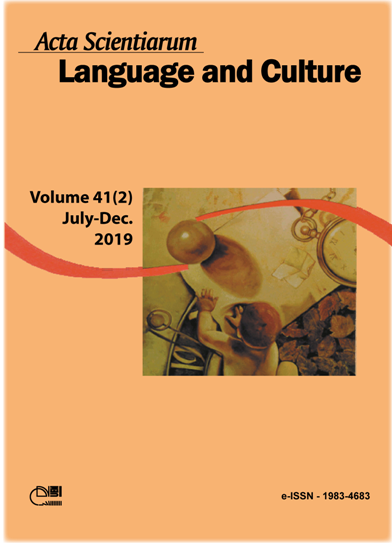Theoretical reflections on non-conventional linguistic indicators of enunciation in language clinic
Abstract
On this article, children’s speeches diagnosed with language disorders are interpreted based on Benveniste’s (1988, 1989) ideas about the phenomenon of enunciation. These are two children’s speeches taken from dialogical situations registered in the context of speech therapy. These situations were understood as primal enunciative scenes, because, since they correspond to the present of enunciation, they would firstly enable situating the I-you relation. Once this relation is stablished, they would also enable the space and time organization of other enunciative events summoned on these speeches. The analysis of the children’s speeches has shown, however: (i) the absence of person’s marks; (ii) the absence of temporality’s marks; and (iii) the absence of spatiality’s mark. Nonetheless, these absences highlighted other marks, non-conventional ones, of children’s registration in their own speeches. These are, fundamentally, fragments of songs and role playing – ways that institute the poetic as a possibility of such registration. Yet, if, on one hand, these marks fulfill the role of the conventional ones, on the other hand, they reduce, on the children’s speeches, everything lived to the time of (their) present then instituted, even if (most) part of it had not developed in the primal enunciative scene. Besides, they transport anything lived to the physical space of the physical enunciation where, from the children’s perspective, something already lived is projected as being happening.
Downloads
DECLARATION OF ORIGINALITY AND COPYRIGHTS
I Declare that current article is original and has not been submitted for publication, in part or in whole, to any other national or international journal.
The copyrights belong exclusively to the authors. Published content is licensed under Creative Commons Attribution 4.0 (CC BY 4.0) guidelines, which allows sharing (copy and distribution of the material in any medium or format) and adaptation (remix, transform, and build upon the material) for any purpose, even commercially, under the terms of attribution.
Read this link for further information on how to use CC BY 4.0 properly.




















6.png)









